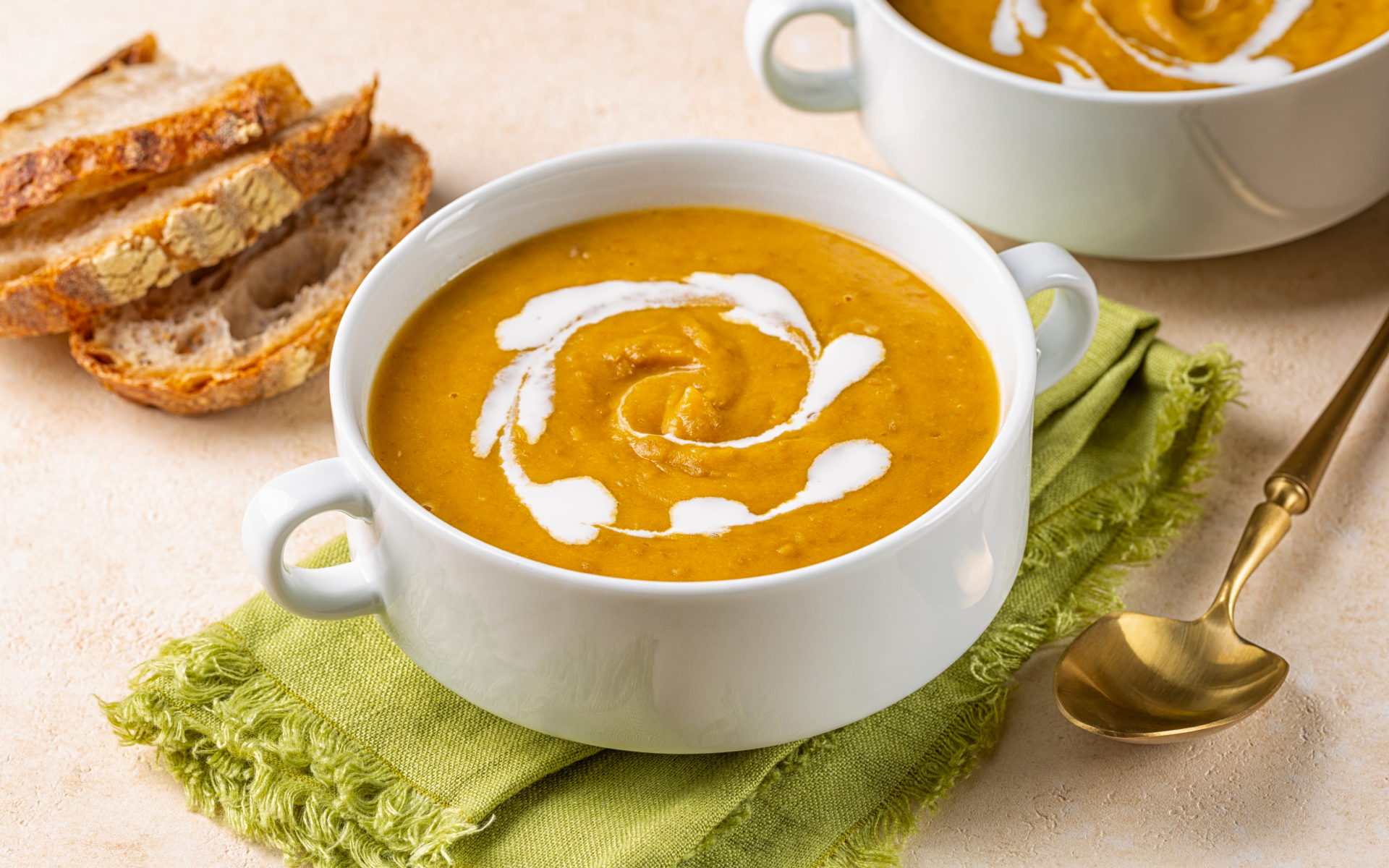The macrobiotic diet (5) transcends a simple meal plan. It’s a philosophy, a way of life, and a holistic approach to mindful eating that paves the way for a balanced and healthy existence. While many meal plans consider factors such as activity level, age, and sex, macrobiotics go beyond. It emphasizes what you eat, what to buy, and how you prepare your food while taking care of your environment as well.
Kickstarting Your Journey with Macrobiotics
The Essence and Roots of Macrobiotic Principles
The macrobiotic diet has its roots (2) in ancient Eastern traditions, drawing upon Chinese yin-yang principles that have existed for over 10,000 years.
The concept of using diet to achieve balance within the body isn’t new. In 1826, Mikao Usui in Japan proposed that a diet of whole grains, fish, vegetables, and fruits could restore balance to your qi (vital energy).
However, the modern macrobiotic diet we know today is largely attributed to George Ohsawa, a Japanese philosopher who further developed the concept in the 1920s. This version gained popularity in the West in the 1960s.
The 1980s saw a surge in interest after physician Anthony Sattilaro published his story about recovering from cancer through macrobiotics (3). While anecdotal accounts of recovery have persisted, there is currently no clear scientific evidence that macrobiotics can cure cancer.
Therefore, a macrobiotic meal plan is a comprehensive dietary and lifestyle approach, not a proven medical treatment.
Decoding the Balance of Yin and Yang in Foods
Two central beliefs are the basis for macrobiotic eating:
- Food is alive; all we eat contains life, energy, and consciousness.
- Eating food will lead to our internal balance of life energy, which results in an overall healthy lifestyle.
The yin and yang principle (1) describes the natural cycles: the summer, day, and full moon are the yang phases, which symbolize warmth and positive energy. On the other hand, the winter, night, and new moon are the yin phases, which symbolize the darkness, when everything is quieter, with dark energy.
What does this mean in diet terms? Yang foods will warm the body, promote balance, and provide more energy, while yin foods will cool us down and throw us off balance (yang).
Therefore, with a simple awareness of yin and yang, we can adjust our diet, creating each dish with a balance of yin and yang foods.
Lean and toned up body isn’t just a far-fetched fantasy. Check out the BetterMe app and watch it propel your weight loss journey into high gear!
Core Components of a Thriving Macrobiotic Lifestyle
One of the core principles of the macrobiotic diet is choosing natural, local, organic, and seasonal foods. This applies to everything from grains and vegetables to pulses, which are the cornerstones of macrobiotic eating. Nutritionally, this translates to a high-fiber, low-fat diet. This philosophy reflects the belief that consuming foods that thrive in your climate will help you thrive as well.
Essential Foods and Ingredients for Balance
Macrobiotic eating emphasizes whole, minimally processed foods that are grown using natural practices whenever possible (2, 3, 6).
What’s on the plate?
- Grains: A variety of whole grains are included, such as brown rice, barley, millet, oats, and corn.
- Seasonal Vegetables: Fresh, seasonal vegetables of all colors and textures are embraced, focusing on leafy greens such as kale, bok choy, and chard. Enjoy them raw or cooked.
- Some may avoid: Certain followers avoid nightshades (potatoes, tomatoes, eggplants, peppers), beets, summer squash, and spinach, but these aren’t strictly prohibited.
- Plant-based Protein: Pulses (lentils, beans), tofu, miso, tempeh, and sea vegetables (seaweed, nori) add variety and protein. Interestingly, processed soybeans transformed into tofu, tempeh, or miso are allowed. Miso soup is a staple that is often consumed twice daily.
- Occasional Proteins: Fresh seafood or fish, lightly roasted and salted nuts, and seeds can be included sparingly.
- Oils and Spices: Avoid olive and coconut oil in favor of less refined options such as sesame oil, unrefined vegetable oil, corn oil, or mustard seed oil.
- Seasoning Symphony: Fermented pickles, shoyu (soy sauce), grated ginger, brown rice vinegar, umeboshi plums, and roasted seaweed add depth of flavor.
Integrating Seasonal and Local Foods into Your Diet
Think of the macrobiotic diet as a philosophy, a way of life that goes beyond a simple diet plan. The benefits of a macrobiotic diet are not just for us. By emphasizing living in harmony with nature, we help preserve our planet for future generations and enhance our health and well-being.
The core principle is to minimize our environmental impact. This translates into a primarily plant-based diet focused on naturally and locally grown foods. This approach reduces exposure to chemicals such as certain pesticides and fertilizers, which proponents claim can benefit our health and the environment.
While the modern world offers an abundance of food year-round, macrobiotics prioritize seasonal, local produce. These foods tend to be fresher, as they don’t need to travel long distances and are often more affordable. This focus also minimizes food transportation costs and reduces food waste, which further contributes to a healthier planet.
Embracing seasonal foods ensures you get a variety of micronutrients throughout the year. It naturally encourages us to adapt our cooking and meals to the changing seasons – think hearty root vegetables for winter soups and refreshing salads brimming with summer’s bounty. The result is a diverse and enjoyable year-round diet.
Read more: A Beginner Intermittent Fasting Meal Plan To Fit Your IF Journey
The Transformative Benefits of Macrobiotic Eating
Enhancing Physical Health and Well-Being
Our body’s Yin and Yang natural balance can be upset by eating too much or too little of one type of food, which can lead to physical and emotional ailments.
Macrobiotic principles divide foods into five categories:
- Hot
- Cold
- Sweet
- Sour
- Salty
A macrobiotic meal plan has a harmonious balance between these five categories. The ultimate goal is restoring our internal yin and yang balance so our bodies can work properly, promoting good digestive and brain health, improving cognitive function and emotional balance, and enabling us to live our lives to the fullest (2, 3, 7).
Mental Clarity and Emotional Balance Through Diet
Some followers of the macrobiotic diet notice a quick energy increase, clearer skin, and a general feeling of well-being as soon as they start the diet. They claim that thanks to the Yin and Yang balance, the fuel you give your body leads to reduced craving and hunger.
Macrobiotic recipes aim to increase awareness and mindfulness of what your body needs. Some people report that just listening to their body and pursuing this yin and yang balance can have a transformative effect on their mental health, reducing stress and promoting a sense of well-being.
Beyond food, exercise, hobbies, and contact with nature are other major components of the macrobiotic lifestyle. Going for walks, swimming, meditating outside, and engaging with nature through painting, poetry, photography, and observation can also promote good mental and physical health.
Crafting Your Personalized Macrobiotic Meal Plan
Step-by-Step Guide to Creating Daily Meal Plans
A macrobiotic meal plan emphasizes whole, local, seasonal ingredients. Your day-to-day plate should look like this (8):
- Grains (60% of your plate): Go wild and add variety to every meal. You can choose quinoa, brown rice, barley, millet, buckwheat, and many more grains.
Portion size: about 1 to 2 cups of cooked grains per meal.
- Vegetables (30% of your plate): Focus mostly on dark, leafy greens such as kale, spinach, and Swiss chard, but also add variety with some root vegetables such as carrots, beets, and turnips. Change how you cook them as well – roasted, steamed, or lightly stir-fried.
Portion size: at least 1 cup of cooked vegetables per meal.
- Beans (10% of your plate) will give you the much-needed protein. Include all kinds of beans, lentils, and chickpeas. You can also opt for tofu or tempeh.
Portion size: aim for ½ to 1 cup per meal.
- Sea Vegetables: Go for new flavors with sea vegetables, such as wakame, hijiki, or arame for a boost of minerals; or fermented foods, such as sauerkraut, kimchi, and miso to add variety and depth.
- Limit extras: If you want animal protein, choose fish, but no more than 2-3 times a week.
Use healthy fats sparingly from sources such as nuts, seeds, and avocado, and occasionally indulge your sweet tooth with seasonal fruit.
Avoid ultra-processed foods, added sugars, dairy products, and stimulants such as coffee.
- Beverages (unlimited): quench your thirst with grain-based teas, herbal infusions, and vegetable juices.
Read more: A Beginner Intermittent Fasting Meal Plan To Fit Your IF Journey
Inspirational Macrobiotic Recipes for Every Meal
Recipe ideas for every day (4):
DAY 1
- Breakfast:: Banana almond buckwheat pancakes
- Lunch: Barley bowl with roasted root vegetables, plus a cup of miso soup seasoned with wakame
- Dinner: Tofu and brown rice stir-fried with vegetables
- Snack: A piece of fruit
DAY 2
- Breakfast: Oats with blueberries and a few walnuts or chia seeds
- Lunch: Quinoa salad with leafy greens and balsamic vinaigrette
- Dinner: Sweetcorn and tofu scramble
- Snack: Hummus and pita triangles
Living Macrobiotically: Tips and Strategies
Shopping Smart for Macrobiotic Ingredients
Smart shopping is the key to success on your macrobiotic journey. Here’s your winning strategy:
- Plan and List: Grab a pen and paper or your smartphone to create a grocery list based on your existing pantry staples, upcoming meal plan, and dietary needs. Sticking to this list will prevent impulse buys that can derail your progress.
- Embrace Local and Seasonal: Make frequent trips to your local grocery store or farmers’ market. This ensures fresh, seasonal produce while supporting your local community and reducing your environmental impact – a win-win!
- Pantry Powerhouse: Stock up on a variety of whole grains. Consider adding a new one each week to keep your meals interesting. These grains will form the foundation of your daily macrobiotic meals.
- Legume Love: Explore the world of legumes – tiny powerhouses such as beans, lentils, and chickpeas provide essential plant-based protein and fiber.
- Unlock Umami: Enhance your cooking with umami flavors. Pick up miso paste, a fermented soybean product, and seaweeds such as wakame and kombu. They add a touch of minerals and essential nutrients.
- Seasoning Savvy: Stock your pantry with healthy fats such as avocado, sesame, and mustard seed oil. Rice vinegar and tamari offer flavorful additions.
Maintaining a Macrobiotic Diet in a Non-Macrobiotic World
Living a macrobiotic lifestyle in a world of non-macrobiotic options can be challenging. However, with some strategic planning, you can make it work.
- Plan Your Plate and Pantry: Dedicating some time every week to create your macrobiotic meal plan and grocery list is key. This reduces temptation and ensures you have healthy options readily available at home.
- Eating Out: Dining out doesn’t need to derail your progress. Be clear and communicate your dietary preferences politely. Many restaurants offer vegetarian or vegan options that can align with macrobiotic principles. Do some research beforehand to find restaurants with suitable dishes, or consider ingredients and cooking methods when making your menu selection.
- Going to a Friend´s House?: Volunteer to bring a macrobiotic dish to share. This is a fantastic way to introduce your loved ones to the deliciousness of whole foods and inspire them to explore healthier options.
- Forgive the Occasional Slip-Up: Focus on progress rather than perfection. Occasional indulgences are a normal part of life, but don’t beat yourself up. Instead, celebrate your commitment to a healthy lifestyle and get back on track with your next meal.
- Find Your Macrobiotic Tribe: Connect with others who share your interest in macrobiotics. Online communities or local groups can offer support, inspiration, and a network of like-minded individuals.
By incorporating these tips, you’ll be well-equipped to navigate the social aspects of a macrobiotic lifestyle and stay on track toward your health goals.
Looking for a way to break the vicious cycle of weight loss and tone up all the jiggly parts? Watch the extra pounds fly off and your muscles firm up with the BetterMe app!
FAQs
How does the macrobiotic diet work?
The macrobiotic diet goes beyond just what you eat. It’s a lifestyle centered on balance and harmony. The main focus is fresh, local, and seasonal organic produce, which promotes a connection with nature, supports local farmers, and cares for the environment. Even if weight loss can be a benefit, the goal is to create a balanced and nourishing way of life.
What are the core principles of the macrobiotic diet?
A macrobiotic meal plan aims to balance yin and yang energies in food, focusing mainly on whole grains as the base of the diet, adding seasonal and local produce, and reducing your intake of animal and ultra-processed products. It also emphasizes mindful eating for better digestion and appreciation of food.
How flexible is the macrobiotic diet?
While some people follow a strict set of rules for specific food ratios and cooking methods, others have some flexibility within the macrobiotic diet, incorporating the core principles of choosing whole grains and seasonal vegetables.
Is the macrobiotic diet right for me?
The macrobiotic diet can be a healthy and sustainable way to eat with many potential benefits. However, it’s important to consult a doctor or registered dietitian before you make significant dietary changes, particularly if you suffer from high blood pressure or kidney disease. Even if you’re healthy, it may take some planning to ensure you get all the nutrients you need.
The Bottom Line
The benefits of a macrobiotic diet go beyond what we put on our plates. This philosophy offers a path toward a more balanced and fulfilling life. By focusing on whole grains and seasonal produce, this way of life promotes harmony with nature and mindful eating practices. It’s a flexible and easy to personalize approach, based on your needs and preferences. However, it’s always best to consult a dietitian or healthcare professional to ensure you get all the nutrients your body needs.
DISCLAIMER:
This article is intended for general informational purposes only and does not serve to address individual circumstances. It is not a substitute for professional advice or help and should not be relied on for making any kind of decision-making. Any action taken as a direct or indirect result of the information in this article is entirely at your own risk and is your sole responsibility.
BetterMe, its content staff, and its medical advisors accept no responsibility for inaccuracies, errors, misstatements, inconsistencies, or omissions and specifically disclaim any liability, loss or risk, personal, professional or otherwise, which may be incurred as a consequence, directly or indirectly, of the use and/or application of any content.
You should always seek the advice of your physician or other qualified health provider with any questions you may have regarding a medical condition or your specific situation. Never disregard professional medical advice or delay seeking it because of BetterMe content. If you suspect or think you may have a medical emergency, call your doctor.
SOURCES:
- Lifestyle prevention of cancer recurrence: the Yin and the Yang (2014, PubMed.gov)
- Macrobiotic Diet (n.d, Webmd.com)
- Macrobiotic diet and cancer (n.d, cancerresearchUK.org)
- Macrobiotic recipes (n.d, macrobiotics.uk.org)
- Macrobiotics, dietary practice (n,d, Britannica.com)
- Nutrient composition and anti-inflammatory potential of a prescribed macrobiotic diet (2015, nih.gov)
- The Macrobiotic Diet in Cancer (2023, ScienceDirect.com)
- What is Macrobiotics? (n.d, shimacrobiotics.org)









